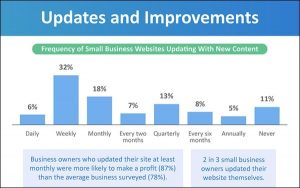While it may seem like an overwhelming addition to a small business’ marketing strategy, social media is an effective, inexpensive component that allows for greater exposure and customer interaction. Here is a crash course in how to get your small business started with social media.
Do your homework
Take some time to do some research and understand the networks you are interested in, the level of commitment required and difficulty of each, and which you feel most comfortable navigating. If you feel that some are too challenging or don’t lend themselves to your business objectives, it’s probably in your best interest to avoid them. It’s not necessary to sign up for multiple platforms if you can manage one or two well and in a consistent manner. Another consideration when researching is your competition. Performing a competitive analysis of the networks your competitors are using, and how they are using them, will help you stay on par with others in your industry. It’s also a good way to get an idea of what you like and don’t like when you start formulating your social media plan.
Assess your abilities
As a small business owner, your time and resources are incredibly valuable. While not difficult, social media management can be very time consuming and requires regularly dedicated time.
Consistency is key in social media in order to maintain your status online, as well as in your customers’ minds. The frequency of posting can vary, but it’s a good idea to be active on your pages every day of the week. Finding the right balance will take time and effort—Buffer has a handy guide to help you get started.
Have a plan
Now that you’ve chosen your social networks and added time to your calendar to manage them, what do you post? Your social content should be consistent, relevant and timely, and must be tailored to each platform. It’s also important to always be on the lookout for opportunities to engage your current customers and followers and not focus strictly on attracting new ones.
Networks in a nutshell:
Twitter – because you only have 140 characters to work with, Twitter is best for sharing quick blurbs, updates, photos, and links to other sources like your blog. Check out these tips and tools to tweet smarter.
Facebook – a more visual platform, Facebook is great for sharing video and photos, offering special promotions and contests, and starting dialogues with your followers.
Google+ – this network functions much in the same way as Facebook, allowing you to share the same types of content with your network. The upside of G+ is that it also impacts your SEO rankings.
LinkedIn – this professional network is great for posting press releases, blog articles, and other industry-specific content. Here are some great LinkedIn networking tips.
Another question to ask: who will do the posting? When delegating posting responsibilities, you should designate specific team members to ensure consistent tone and avoid duplicate or disorganized posting. Another thing to keep in mind is tone. Social media is a great outlet for showing your business’ personality and culture, but keep your buyer personas in mind when determining how you want your company to come across. An efficient way to stay on top of your social activity is with a content calendar. Ranging from simple to complex, a content calendar tracks who posts what and when, planning out your entire content schedule. Download this awesome template from HubSpot to get started.
Follow up
Monitoring and responding to engagement on your pages is important and it’s smart to make it a habit to check in daily, if possible. Good or bad, consistently taking the time to interact will go a long way with your followers (and critics). Addressing inquiries, comments, and reviews in a polite and professional manner shows that you are involved and gives you another way to engage with your customers. In the case of a negative situation, it also allows you to offer a solution and potentially get a second chance with your customer.
Business & Finance Articles on Business 2 Community
(35)





